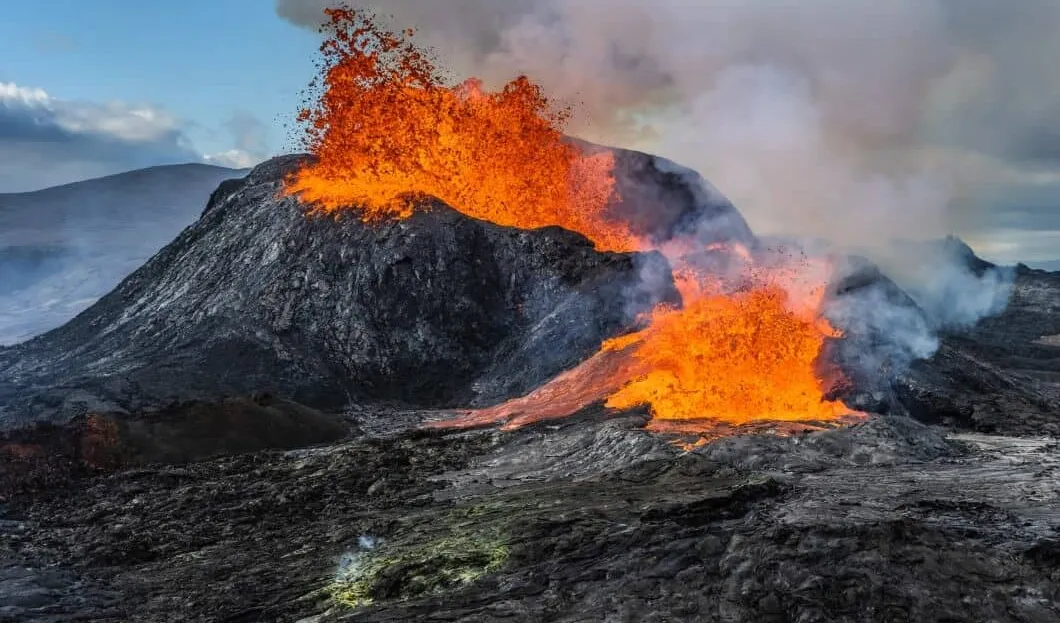
Iceland's volcanoes are active once again. The Icelandic Meteorological Office (IMO) has reported a new volcanic eruption on the Reykjanes peninsula in the southwest. The lava has reached a height of 50 meters, prompting authorities to issue a red alert and evacuate the most affected nearby areas. Iceland’s tourism has been affected.
The Icelandic Meteorological Office, the Department of Civil Protection, and scientists from the University of Iceland closely monitor the conditions to ensure the safety of the environment, society, and tourists. All Icelandic airports are open, and all flights to Iceland operate as scheduled.
The relatively small volcanic eruption is not explosive and does not come into contact with water or ice, thus minimizing the risk of dangerous pyroclastic clouds. The volcanic material has erupted over a 2.5-kilometer fissure.
With the new eruption in Reikjanes, the area has experienced its fifth volcanic activity since December. The fissure may expand towards the nearest town, Grindavík, where walls have been constructed to contain the lava. The eruption's effects are localized to the eruption site, resulting in road closures but not posing a threat to people. All services in Iceland are operating normally.
Geologists are still determining how long the eruption will last or whether more material will come out of the area's fissures. The most serious of the five eruptions occurred in January, when the lava swept away some houses of the fishing population, and the authorities had to create barriers to stop its advance.
The volcanic eruption currently affects less than 1% of Iceland's territory, although it could impact the country's main tourist attractions and travel routes. Airlines continue to operate normally due to the low risk of flight cancellations.
Iceland has about 130 volcanoes, and 32 of them remain active. The centers of molten rock emission are located in a strip running from northwest to southwest. In 1784, the Laki volcano killed 9,000 inhabitants and 50% of the island's livestock.
Scientific estimates suggest that almost 14 cubic kilometers of lava were expelled during an eight-month explosion. The resulting gas plume significantly impacted the global climate and affected the crops of neighboring European countries.
The area had been dormant for nearly 800 years until early 2020, when intense seismic events started on the peninsula. Magma emerged in 2021, and the current eruption is at least the sixth since then.
One of the most significant volcanic events in the Nordic country's history occurred in 2010, when the 'Eyjafjallajokull' volcano erupted. The explosion released an ash plume so massive that it paralyzed air traffic across Europe for several weeks, resulting in the cancellation of 100,000 flights and affecting over 10 million people.
The eruption of Fagradalsjall in March 2021 attracted thousands of onlookers and provided a unique tourism opportunity for travelers to experience Iceland's incredible geology. According to the Icelandic Tourist Board, more than 356,000 tourists visited the site during the eruption. Long lines formed along the main trails, and many visitors stayed near the lava field into the evening to take nighttime photos of the spectacle.
Travel agencies took advantage of the occasion and organized specialized trips to observe the lava while ensuring safety for the tourists.
Tourists are advised to stay informed and alert, monitor local news and government websites, and follow the instructions of Civil Protection. Another option is to download the SafeTravel app to receive updates on road conditions and other relevant information for tourists from the Icelandic Search and Rescue Association.










